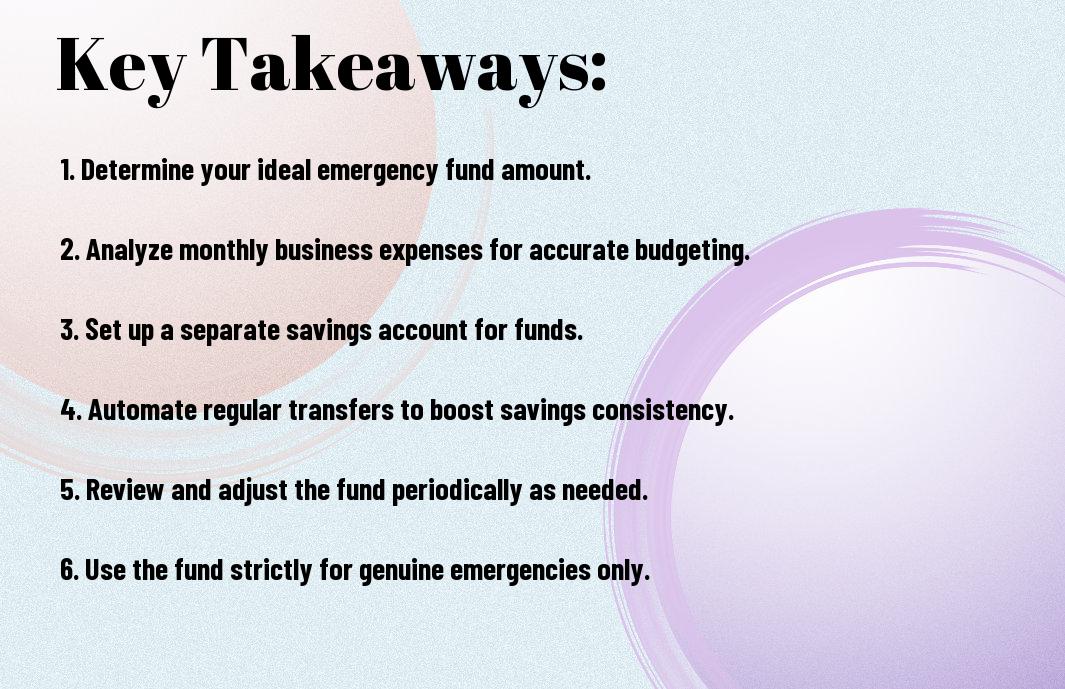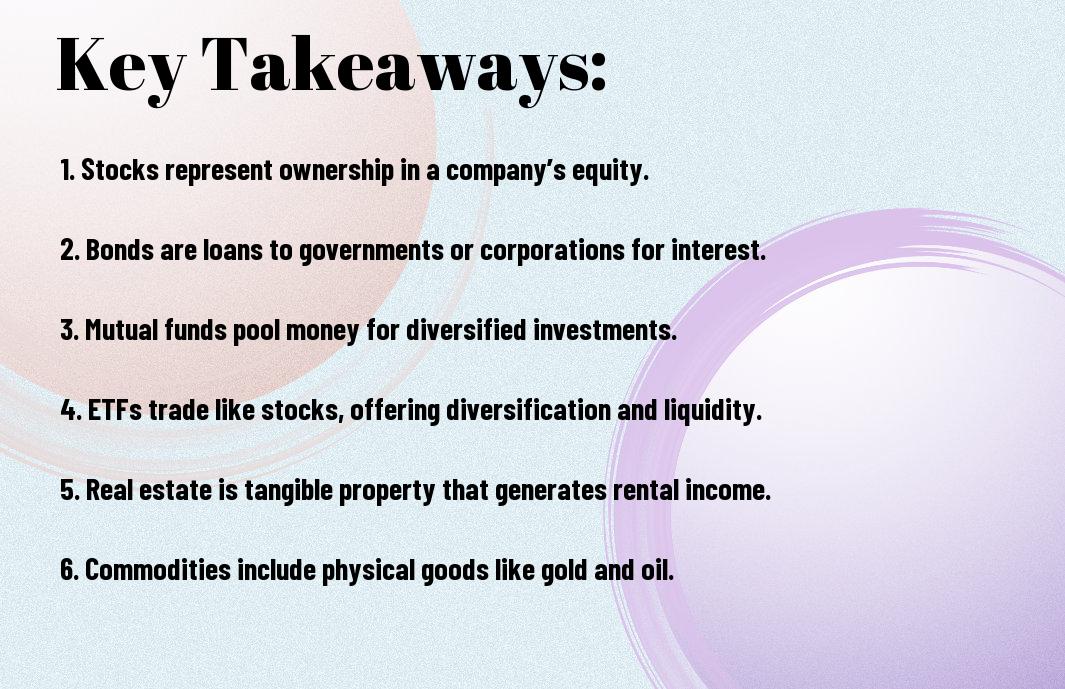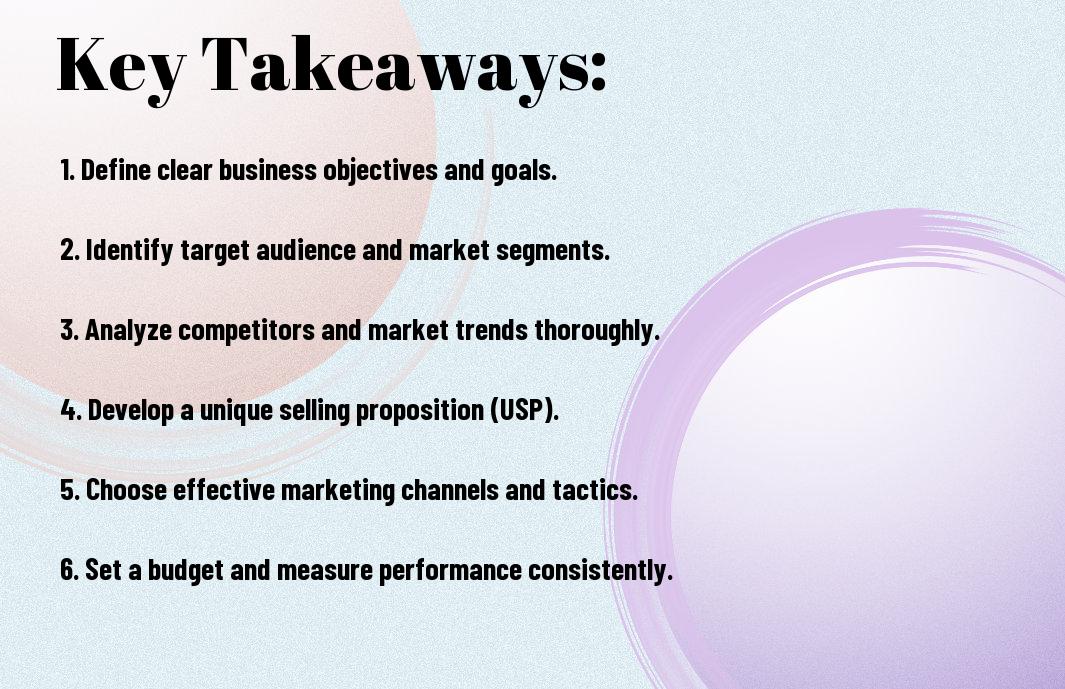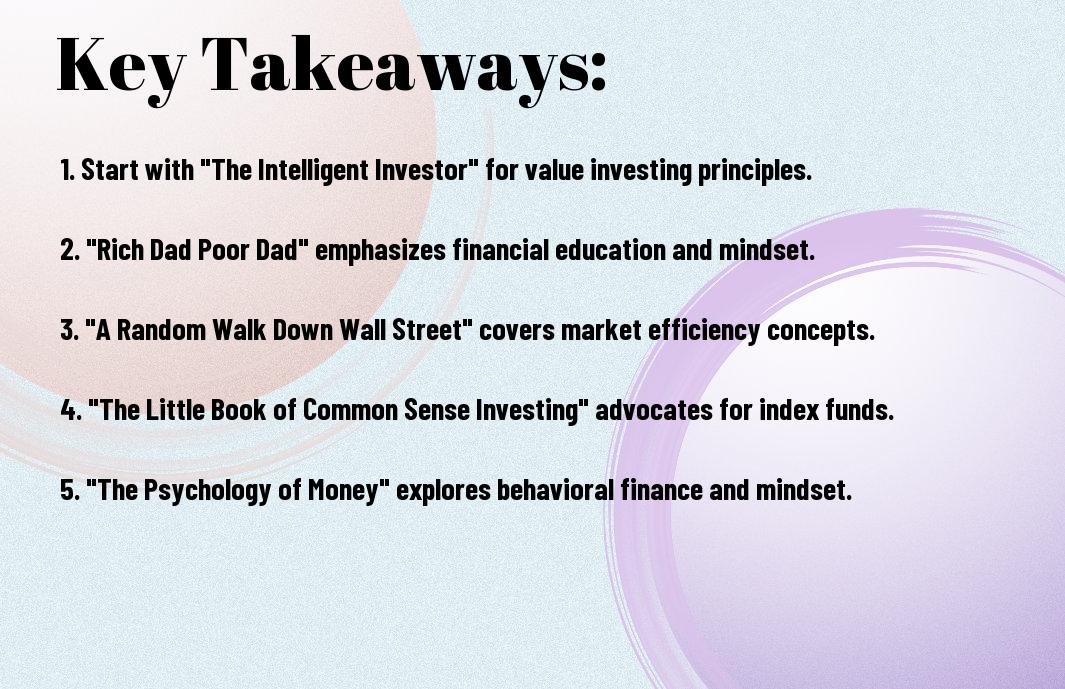Most investors seek a reliable and efficient way to grow their wealth, and investing in index funds can be an excellent choice for you. These funds offer diversification, reduced fees, and a straightforward approach to tracking market performance. By choosing index funds, you allow your portfolio to mirror the market’s performance, which historically leads to solid long-term growth. To get started, consider exploring the Best Index Funds In October 2024 and see how they can enhance your investment strategy.
Key Takeaways:
- Diversification: Investing in index funds provides instant diversification across a wide range of stocks, reducing the risk associated with individual investments.
- Lower Costs: Index funds generally have lower expense ratios compared to actively managed funds, allowing investors to keep more of their earnings.
- Consistent Performance: Historically, index funds often outperform actively managed funds over the long term, thanks to their passive management strategy.
- Accessibility: Index funds are accessible to both beginner and experienced investors, providing a straightforward way to enter the stock market.
- Tax Efficiency: Index funds tend to generate fewer capital gains distributions, making them more tax-efficient than many actively managed funds.
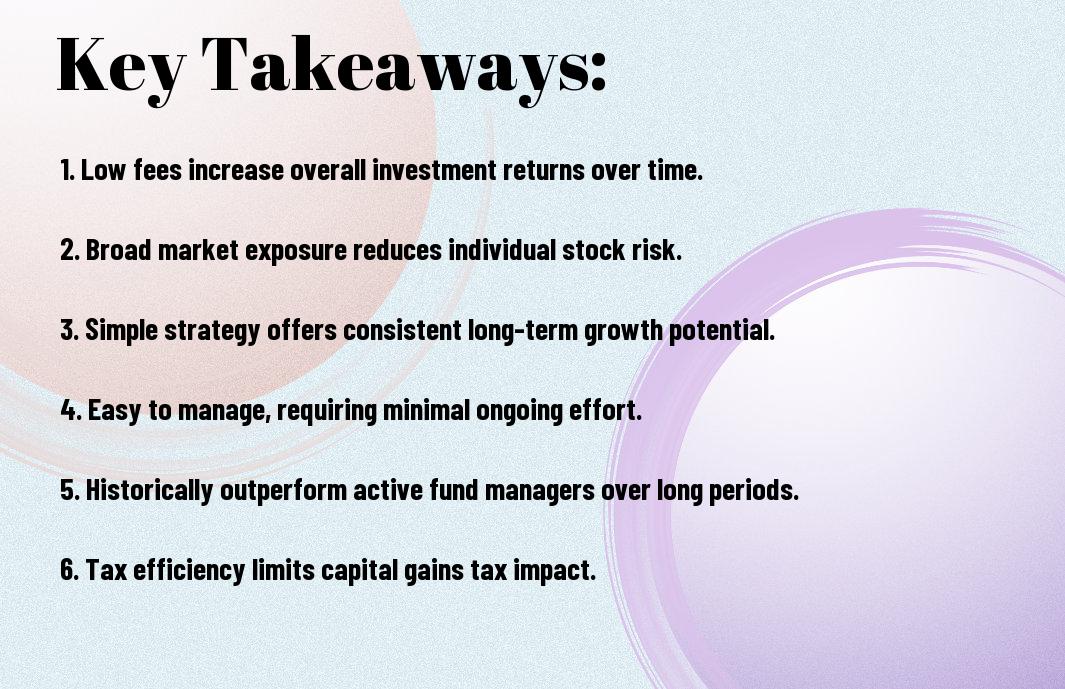

Understanding Index Funds
The world of investing can be overwhelming, but index funds provide a straightforward way to grow your wealth. By tracking a specific market index, these funds consolidate various investments into one, allowing you to diversify your portfolio easily and efficiently.
What Are Index Funds?
Index funds are investment funds designed to replicate the performance of a particular market index, such as the S&P 500 or the Dow Jones Industrial Average. By investing in an index fund, you own a small portion of all the securities within that index, offering instant diversification for your portfolio.
How Do Index Funds Work?
Funds work by pooling money from multiple investors to purchase a wide array of stocks or bonds that mirror the composition of a specific index. This passive investment strategy means you don’t have to actively manage your portfolio, as the fund’s value fluctuates according to the index it tracks.
And because index funds typically have lower fees compared to actively managed funds, you can keep more of your investment returns over time. You also benefit from the compounding growth as the market increases. By holding onto your shares for the long term, you position yourself to potentially reap higher returns with minimal effort and lower risk.
Advantages of Investing in Index Funds
One of the most compelling reasons to invest in index funds is their ability to simplify your investment strategy while providing consistent returns. By investing in these funds, you can gain exposure to a broad market or specific sector, which can lead to potential long-term growth without the need for active management. This approach allows you to focus on your overall financial goals while benefiting from the collective performance of multiple assets.
Low Costs and Fees
Beside the ease of management, index funds typically come with lower costs and fees compared to actively managed funds. Since index funds are passively managed, they have fewer trading costs and lower expense ratios. This means more of your money is working for you rather than being eaten up by expenses, allowing your investments to grow more efficiently over time.
Diversification Benefits
Around investing in index funds, you also enjoy significant diversification benefits. This strategy spreads your investment across a wide range of assets, reducing your overall risk. In a typical index fund, you can own shares in hundreds, if not thousands, of companies, which mitigates the impact of a poor-performing asset on your portfolio.
Also, diversification is vital for smoother investment performance. By holding a varied selection of stocks or bonds within an index fund, you can balance out market fluctuations. If one sector declines, the gains in another can help offset potential losses. This broad exposure not only increases your chances for returns but also provides peace of mind knowing less of your financial future depends on any single investment’s success.
Performance and Historical Returns
Not all investments yield the same level of success, but historically, index funds have consistently outperformed many actively managed funds over extended periods. While individual results may vary, the track record of index funds signifies their capability to offer investors substantial returns over time, making them a reliable choice for those seeking long-term wealth accumulation.
Comparing Index Funds to Actively Managed Funds
| Factors | Index Funds |
|---|---|
| Management Style | Passive |
| Fees | Lower fees |
| Performance Consistency | Consistent with the market |
| Risk Level | Market risk |
| Return Potential | Historically strong |
Long-Term Performance Trends
With time, index funds tend to demonstrate a pattern of sustained growth compared to actively managed funds. This trend often highlights the benefits of a passive investment strategy, allowing your assets to compound while minimizing costs and emotional investment in day-to-day market fluctuations.
At the heart of long-term performance trends is the power of compounding. When you invest in index funds, you tap into the broader market’s performance, which generally rises over time. This strategy helps you capture the market’s growth, aligning your returns with historical upward trajectories, even during market downturns, reinforcing the idea that staying invested can yield significant rewards in the long run.
Tax Efficiency of Index Funds
Keep your investment strategy optimized by choosing index funds, as they offer remarkable tax efficiency compared to actively managed funds. With lower turnover rates, index funds generate fewer taxable events, allowing you to retain more of your profits. For 3 Reasons to Invest in Index Funds, consider their tax efficiency as an necessary advantage for your portfolio.
Capital Gains Distributions
Between the low turnover and passive management style, index funds typically produce fewer capital gains distributions, meaning you won’t face frequent tax bills from buying and selling securities. This feature helps keep your investment growth intact, reducing the tax burden you might encounter with other fund types.
Tax-Advantaged Accounts
Gains made within tax-advantaged accounts, like IRAs or 401(k)s, are not subject to taxes until you withdraw them. This allows your investments to grow without the immediate concern of tax implications, enhancing your overall returns over time.
Another advantage of utilizing tax-advantaged accounts is that you can invest in index funds and reap the benefits of their lower tax implications while enjoying tax-deferral. By maintaining your assets in these accounts, you allow your investments to compound without interruption from taxation, which can significantly enhance your wealth-building potential over the long term.
How to Invest in Index Funds
Your journey into index fund investing begins with understanding the different types of funds available, evaluating your financial goals, and selecting a suitable brokerage platform. Begin by researching index funds that track the performance of specific market segments or asset classes, and consider whether you prefer low-cost, passively managed funds. Once you’ve decided on a fund, you can easily set up an investment account and start contributing periodically to grow your investment over time.
Choosing the Right Index Fund
Behind every successful investment is a solid understanding of index funds’ structures and options. Assess factors like expense ratios, fund performance, and tracking errors to find a fund that aligns with your investment philosophy. You may also want to explore whether you prefer broad-market exposure or a focus on specific sectors, allowing you to tailor your portfolio to your risk tolerance and financial objectives.
Setting Up an Investment Strategy
Beside selecting the right funds, establishing a disciplined investment strategy is crucial. Determine your investment horizon and how much you can afford to contribute regularly. Whether you opt for a one-time lump-sum investment or set up ongoing contributions, consistency is vital for growth. You may also choose to employ dollar-cost averaging, which involves investing a fixed amount regularly to reduce the impact of market volatility.
Right from the start, having a well-defined investment strategy can lead to better decision-making and more favorable outcomes. Establish clear goals, such as saving for retirement or a major purchase, to guide your investment choices. Regularly review your portfolio to ensure it aligns with your evolving objectives, making adjustments as necessary. Consistent monitoring and revisiting your strategy will help you stay on track and adapt to any changing market conditions.
Common Misconceptions about Index Funds
For many investors, index funds can seem too simplistic or limited in their ability to generate significant returns. Some may believe that indexing is only suitable for passive investors or that active strategies always outperform them. However, these misconceptions often overlook the inherent benefits and proven long-term performance of index funds, which can provide you a reliable investment solution without the added stress of constant market monitoring.
Risk Factors
By understanding the risk factors associated with index funds, you can make informed decisions about your investment strategy. Common risks include market volatility, exposure to specific sectors, and the possibility of underperforming compared to actively managed funds. To mitigate these risks, consider the following:
- Diversify your portfolio.
- Choose funds with low expense ratios.
- Invest for the long term.
Assume that you stay informed about your investments and adjust your strategy based on your risk tolerance.
Active Management vs. Passive Management
Funds can be categorized into active and passive management strategies. Active management involves selecting individual stocks or bonds with the aim to outperform a benchmark index, while passive management aims to replicate the performance of a specific market index through index funds. Each approach has its own advantages, but as you evaluate your options, it’s important to acknowledge that many studies suggest passive strategies often outperform actively managed funds over the long term.
Active management focuses on tactical investment decisions made by portfolio managers, seeking to identify undervalued assets or timely market opportunities. However, these strategies can come with higher costs and the risk of significant underperformance if the manager’s choices don’t yield expected results. In contrast, passive management through index funds offers lower costs and the potential for steady, long-term growth by simply matching the market’s performance. This often makes passive investing a more appealing choice for those looking to achieve consistent results without the risks associated with active trading.
Conclusion
Summing up, investing in index funds can provide you with a cost-effective way to build your wealth over time. By diversifying your portfolio and minimizing fees, you can enhance your investment returns while taking a hands-off approach. This strategy empowers you to gain exposure to the broader market, which can be beneficial for your financial growth. For a deeper understanding of this investment strategy, check out The Pros and Cons of Indexes.
FAQ
Q: What are index funds and how do they work?
A: Index funds are a type of mutual fund or exchange-traded fund (ETF) designed to replicate the performance of a specific market index, such as the S&P 500 or the Dow Jones Industrial Average. They achieve this by investing in the same stocks or bonds that comprise the index, proportionally to their weight in the index. This passive management approach often results in lower fees and a simplified investment process, as the fund manager does not actively select individual securities.
Q: What are the benefits of investing in index funds compared to actively managed funds?
A: One significant advantage of index funds over actively managed funds is their lower expense ratio. Since index funds are passively managed, they typically have lower management fees and operating expenses, allowing investors to retain a higher percentage of their returns. Additionally, studies have shown that many actively managed funds consistently fail to outperform their benchmark indices over time, making index funds a more efficient vehicle for long-term investment. Lastly, index funds offer broad market exposure, reducing the risk associated with individual stock investments.
Q: How can index funds fit into an overall investment strategy?
A: Index funds can play a vital role in a diversified investment strategy. They provide a simple and effective way to achieve diversification across various asset classes and market sectors, which can help manage risk. Investors can choose different index funds that focus on various market segments, such as large-cap, small-cap, international, or sector-specific indices. This allows for tailored investment strategies that align with individual financial goals and risk tolerance, making index funds a valuable tool for both novice and seasoned investors.
